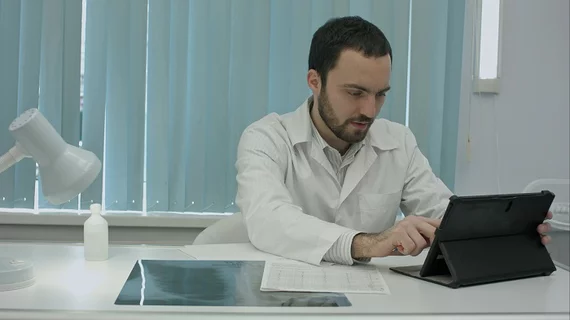ARRS 2022 discusses pitfalls of radiologist 'tunnel vision'
Radiologist “tunnel vision” was a topic of conversation this week during a presentation at the 2022 American Roentgen Ray Society’s annual meeting taking place in New Orleans.
Defined as “missing a finding hiding in plain sight due to its unexpected nature," inattention blindness bias causes radiologists to unintentionally overlook what could be considered an obvious or significant finding. This happens more frequently in emergency imaging scenarios, experts explained.
These findings can sometimes be of great significance, such as the presence of bowel perforations, fractures, cancer, pseudoaneurysms and infections, the authors explained. The presentation spotlighted five cases of misinterpretations that were used in peer learning reviews.
The cases included findings “hiding in plain sight” on chest, abdomen and pelvis imaging completed in emergency departments using a variety of modalities—x-ray, CT, MRI, fluoroscopy, etc. One case revolved around a white ball in the spleen that could have represented a pseudoaneurysm that was not detailed in radiology reports. Others involved missing bone margins that were not assessed for malignancy and locules of gas adjacent to the colon that appeared similar to diverticulosis.
“Astute radiologists can wander by these diagnoses due to inattention blindness,” wrote first author Willie McClure, of David Grant USAF Medical Center, Travis Air Force Base in California. “The cases in this exhibit can be of benefit in peer learning to teach places to perform a second look during interpretation.”
Being aware of these image findings, whether incidental in nature or not, could prompt radiologists to recommend additional exams to further investigate origins. The authors suggested that the cases included in their presentation should serve as valuable teaching moments during peer learning reviews.
The ARRS 2022 meeting concludes on May 22.
Related radiology reporting articles:
Study urges radiologists to report CAC findings on all chest CTs, regardless of clinical indication
Immediate radiology report access leads to influx of patient questions for 78% of providers

